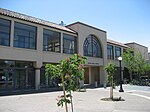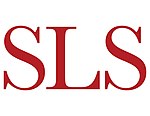White Memorial Fountain
1964 establishments in California1964 sculpturesCalifornia sculpture stubsFountains in CaliforniaOutdoor sculptures in California ... and 1 more
Stanford University buildings and structures

White Memorial Fountain, also known as The Claw, is a fountain by Aristides Demetrios on the Stanford University campus in Stanford, California, United States. It was installed in 1964, and Demetrios returned to restore the fountain in 2011. It has 65 jets.The fountain was commissioned by Mr. and Mrs. Raymond B. White to commemorate their sons, William N. and John B. White II.
Excerpt from the Wikipedia article White Memorial Fountain (License: CC BY-SA 3.0, Authors, Images).White Memorial Fountain
Panama Mall,
Geographical coordinates (GPS) Address Nearby Places Show on map
Geographical coordinates (GPS)
| Latitude | Longitude |
|---|---|
| N 37.42497 ° | E -122.16939 ° |
Address
The Claw
Panama Mall 408
94305
California, United States
Open on Google Maps







